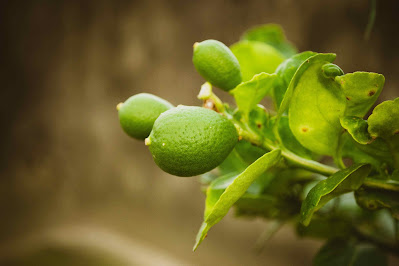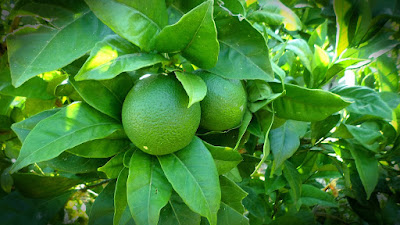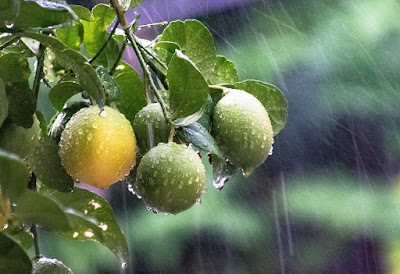Beyond the simple joy of biting into a slice of homemade lemon pie, maintaining your lemon tree has many advantages...

Imagine strolling through your own backyard, bathed in the warm golden glow of sunlight, as you pluck a ripe, sun-kissed lemon from a flourishing tree. The zesty fragrance of freshly picked fruit fills the air, and your mouth waters in anticipation of the tangy delight that's about to burst across your taste buds. This is the magic of growing a healthy lemon plant right in your home garden.
Lemons represent freshness, adaptability, and sustainability in addition to being a zesty treat. Beyond the simple joy of biting into a slice of homemade lemon pie, maintaining your lemon tree has many advantages. It improves the beauty of your outdoor space, gives you access to a supply of organic, pesticide-free lemons, and promotes a greener, more environmentally conscious way of life.
Selecting the Right Lemon Variety
When embarking on your lemon-growing journey, one of the first crucial decisions you'll make is selecting the right lemon variety. Lemon trees come in various cultivars, each with its own unique characteristics, flavor profiles, and adaptability. Three popular choices for home gardening are the Eureka, Meyer, and Lisbon lemon varieties.
1. Eureka Lemon:
The Eureka lemon is a well-known and commonly cultivated type, distinguished by its tart and acidic flavor.
- The fruit it produces are oval in shape and are a medium size.
- The strong growth of Eureka lemons makes them appropriate for a range of conditions. They produce a lot and make great ingredients for cooking.
- Drawbacks: They may need protection in colder climates because they may be more susceptible to cold temperatures than other types.
2. Meyer Lemon:
- Meyer lemons are adored for their milder, less acidic flavor, which makes them perfect for desserts and drinks.
- Their fruit is rounder, thinner-skinned, and smaller. It begins out dark yellow and turns light orange as it ripens.
- Advantages: Meyer lemons grow well in containers and may withstand lower temperatures better than some other types.
Potentially more susceptible to diseases and pests.
3. Lisbon Lemon:
- Meyer lemons are cherished for their sweeter, less acidic flavor, making them perfect for sweets and beverages.
- Their fruit, which starts out deep yellow and matures to a bright orange, is smaller, rounder, and has a thinner peel.
- Advantages: Meyer lemons can survive lower temperatures better than some other kinds and are well-suited for container planting.
They could be more vulnerable to infections and pests.
Tips for Choosing the Right Lemon Variety:
 |
Tips for Choosing the Right Lemon Variety
|
1. Climate Considerations: Consider your local climate. Eureka and Lisbon varieties thrive in warmer climates, while Meyer lemons are more adaptable to cooler regions or container gardening.
2. Space Availability: Assess the space you have for your lemon tree. If space is limited, a dwarf or semi-dwarf variety, like the Meyer lemon, may be a better fit.
3. Intended Use: Consider how you want to use the lemons. Meyer lemons might be your first choice if you like your lemons sweeter and less tart in your recipes. Eureka or Lisbon varieties can be excellent if you want conventional, tart lemons that are suitable for a variety of tasks.
Choosing the right lemon variety sets the foundation for a successful lemon-growing experience, so take your time to make the best choice based on your climate, space, and personal preferences.
Planting Your Lemon Tree
 |
| Planting a lemon tree |
Planting a lemon tree is a rewarding endeavor, but it requires careful attention to detail to ensure the best start for your citrus companion. Follow these steps to plant your lemon tree successfully:
Step 1: Choose the Right Spot:
Select a sunny location with well-draining soil. Lemon trees thrive in full sunlight, so aim for at least 8 hours of direct sunlight per day.
Step 2: Dig the Hole:
Ensure that the hole is the same depth and twice as wide as the root ball. This ensures ample room for the roots to spread and grow.
Step 3: Transplant Carefully:
Without damaging the roots, gently remove the lemon tree from its container. Tap the sides of the plastic container the tree is in gently to spread the roots. You can directly plant it if it's in a biodegradable container.
Step 4: Plant at the Right Depth:
The top of the root ball should be level with the surrounding dirt when the tree is inserted into the hole. Planting too deeply can cause root rot, so avoid doing so.
Step 5: Fill the Hole:
The root ball's top should be level with the soil when the tree is inserted into the hole. Not planting deeply enough will prevent root rot.
Step 6: Mulch and Water:
To assist conserve moisture and control soil temperature, spread a layer of organic mulch around the tree's base. Water thoroughly after planting to settle the soil and hydrate the roots.
Spacing and Depth Tips:
- Space multiple lemon trees at least 10 to 15 feet apart to allow for proper air circulation and room for growth.
- For container planting, choose a pot that is at least 18 inches in diameter and has good drainage.
- Ensure that the graft union (the knobby area where the lemon tree was grafted onto rootstock) is above the soil line when planting.
By following these steps and tips, you'll give your lemon tree a strong start and set it on the path to thriving in its new home. Remember to provide regular care and attention to nurture your lemon tree as it grows and bears fruit.
Essential Care and Maintenance
 |
| Caring for your lemon plant |
Caring for your lemon plant is vital to ensure it thrives and produces a bountiful harvest. Here are the key aspects of lemon tree care, including watering, fertilizing, and pruning:
1. Watering:
Lemon trees need consistent moisture, but they also dislike waterlogged soil. Follow these watering tips:
- Only water thoroughly between applications when the top inch of soil is fully dry.
- Use more water in the spring and summer when plants are actively growing; less in the fall and winter when they are dormant.
- Refrain from giving your plants too much water, since this might cause root rot. Water the plant completely without drowning it with a soaker hose or drip irrigation system.
2. Fertilizing:
Lemon trees benefit from regular feeding to ensure healthy growth and fruit production. Apply a fertilizer with a balanced NPK ratio of 10-10-10 or 12-6-6.
- Use fertilizer in the late winter, early summer, and late summer according to the instructions on the container.
- Fertilize less in the winter since plants dormant.
3. Pruning:
Pruning helps maintain the shape, size, and health of your lemon tree:
- Remove dead or diseased branches and leaves promptly.
- Maintain an open canopy to optimize air circulation and sunshine penetration.
- Prune in late winter or early spring to promote new growth.
Watering Schedule:
- During the growing season (spring and summer): Water deeply every 2-4 weeks, depending on local conditions. Adjust based on soil moisture levels and weather.
- In the dormant season (fall and winter): Reduce watering to every 4-6 weeks or when the soil becomes dry, but avoid letting the roots completely dry out.
Mulching:
Mulching is a vital aspect of lemon tree care, offering several benefits:
- Cover the base of the tree with a 2-4 inch layer of organic mulch, such as wood chips or compost, allowing a space around the trunk.
- Mulch controls temperature, inhibits weed growth, and aids in retaining soil moisture.
- Avoid piling mulch up to the trunk as this can cause decay.
Proper care and maintenance are essential for a healthy lemon tree that will reward you with abundant, juicy fruit. By following these guidelines and adjusting them to your specific climate and conditions, you'll be well on your way to becoming a successful lemon grower.
Protecting Against Pests and Diseases
 |
| common pests and diseases |
Keeping your lemon tree free from common pests and diseases is crucial for its well-being and fruit production. Here's what you need to know:
Common Pests:
- Citrus Aphids: These tiny insects feed on sap, causing leaves to curl and become sticky. Blast them off with a strong stream of water or introduce natural predators like ladybugs.
- Scale Insects: Scale insects attach to branches and leaves, sucking plant juices. Prune and discard infested branches or use neem oil as a natural remedy.
- Citrus Leafminer: In order to alter the growth of new leaves, larvae burrow into them. To catch adults, use sticky traps and prune the afflicted leaves.
- Spider Mites: These pests cause stippled and discolored leaves. Increase humidity around the tree, spray with water, or introduce predatory mites.
Common Diseases:
- Citrus Canker: This bacterial disease leads to raised lesions on leaves, fruit, and stems. Prune and destroy affected parts and apply copper-based sprays.
- Citrus Black Spot: A fungal disease causing dark, raised spots on fruit. Remove infected fruit and use copper fungicides.
- Root Rot: Often due to overwatering, root rot causes yellowing leaves and reduced growth. Improve drainage and avoid overwatering.
- Powdery Mildew: on the slick, white surface of the developing leaves. Make sure there is ample airflow and use fungicides with sulfur as an ingredient.
Prevention and Early Intervention:
- Regularly inspect your lemon tree for signs of pests and diseases, especially on the undersides of leaves.
- Encourage natural predators like ladybugs and lacewings by planting companion plants.
- Prune regularly to improve air circulation and reduce hiding spots for pests.
- Apply organic treatments like neem oil, garlic spray, or horticultural soap as preventive measures.
- Practice good watering habits to avoid water-related issues, and avoid splashing water on the foliage.
Early detection and intervention are key to managing pest and disease problems effectively. By adopting organic methods and staying vigilant, you can protect your lemon tree and enjoy healthy, delicious fruit.
Harvesting Your Homegrown Lemons
 |
| Harvesting your homegrown lemons |
Harvesting your homegrown lemons is an exciting moment, but timing and technique are crucial for the best flavor and to ensure your tree continues to thrive. Here's how to do it right:
Timing and Technique:
- Hold off until the lemons are completely ripe. They have to be polished, firm, and have a striking hue.
- In general, depending on the variety and growth circumstances, lemons take 6 to 9 months to ripen.
- To remove the fruit off the tree, use hand clippers or a pair of sharp pruning shears. Cut the stem just above the lemon, approximately half an inch.
- Try not to pull or twist the fruit because doing so can harm both the tree and the fruit.
Kitchen Ideas for Freshly Harvested Lemons:
1. Lemonade: Homemade lemonade is produced using freshly squeezed lemon juice. Drinking water that has been sweetened with honey or sugar is the most effective natural approach to quench your thirst.
2. Zest and Peel: Grate the lemon zest for use in baking, marinades, or dressings. You can also preserve lemon peel in sugar for homemade candied peel.
3. Cooking and Baking: Lemons are versatile in the kitchen. Use lemon juice and zest to add brightness to dishes like pasta, chicken, seafood, and desserts.
4. Preserve: For year-round enjoyment of your harvest, make lemon curd, lemon marmalade, or lemon-infused olive oil.
5. Herbal Teas: Add lemon slices to hot or cold herbal teas for a burst of citrus flavor.
In addition to satisfying your palate, using your fresh lemons in inventive ways in the kitchen will make all of your gardening work worthwhile. For continued freshness, keep any extra lemons in a cool, dry area.
Troubleshooting Common Lemon Tree Problems
 |
| Common Lemon Tree Problems |
Lemon tree enthusiasts may run into a few obstacles along the way, but with persistence and patience, you may overcome the following issues:
1. Yellowing Leaves:
Issue: Yellowing leaves can indicate nutrient deficiencies or overwatering.
Solution: Adjust your watering schedule, ensure proper drainage, and fertilize with a balanced citrus fertilizer rich in micronutrients.
2. Fruit Drop:
Issue: Premature fruit drop can occur due to stress, poor pollination, or temperature fluctuations.
Solution: Maintain consistent watering and provide protection during extreme temperature shifts. Encourage pollinators like bees, and consider hand-pollination.
3. Pests and Diseases:
Issue: Aphids, scale insects, and fungal diseases can plague lemon trees.
Solution: Employ organic pest control methods, like neem oil or beneficial insects. Apply appropriate fungicides for disease management.
4. Slow Growth:
Issue: Stunted growth can result from poor soil, inadequate sunlight, or pests.
Solution: Ensure your lemon tree gets sufficient sunlight, amend the soil with organic matter, and address any pest issues promptly.
5. Blossom Drop:
Issue: Blossom drop can happen if the tree is stressed or experiences temperature extremes.
Solution: Maintain consistent growing conditions, avoid over-fertilization, and provide protection during temperature fluctuations.
6. Irregular Fruit Production:
Issue: Lemon trees may produce fruit unevenly.
Solution: Prune your tree to encourage even fruit distribution, and provide consistent care to reduce stress.
Remember, successful lemon tree cultivation requires patience and dedication. Consistently provide the right care, monitor for issues, and address them promptly. Over time, your lemon tree will reward you with a bountiful harvest and lush, healthy foliage. Gardening is a journey, and with each season, you'll gain valuable experience in nurturing your lemon plant to its full potential.
In Conclusion
In closing, cultivating a thriving lemon plant at home is not just a gardening endeavor; it's an enriching journey filled with citrusy rewards. Here are the key takeaways from our guide:
- Variety Matters: Choosing the right lemon variety for your climate and space sets the foundation for success.
- Plant with Precision: Proper planting techniques, including hole depth and soil preparation, are essential for a healthy start.
- Essential Care: Regular watering, fertilization, and pruning are vital for robust growth and fruit production.
- Pest and Disease Management: Be vigilant, employ organic methods, and act swiftly to protect your lemon tree from common issues.
- Harvest with Care: Timing and technique matter when picking your lemons for optimal flavor and quality.
- Troubleshooting: Anticipate common issues and deal with them with patience and consistency.
Be prepared for typical problems and persistently look for answers.
We'd love to hear about your lemon-growing experiences and any questions you may have. Share your stories and queries in the comments below, and let's continue this fruitful conversation.
Are you prepared to learn more about gardening? For frequent access to professional gardening advice and updates. Share this article on your preferred social media channels to encourage your friends to start their own lemon-growing endeavors and don't keep this important information to yourself. Explore our associated blog pieces and resources for in-depth reading to improve your green thumb.







Join the conversation